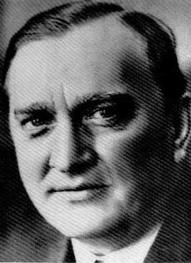|
There was this thing going on Facebook: The idea is to fill Facebook with math, surprising friends with its little-known beauty, which augments art, poetry, etc. Whoever likes this post will receive a mathematician's name, and will have to write a short introduction about them, and explain in layman terms a mathematical work (theorem, idea, book, field of math, anything important or interesting) by them. Include this text, but you may modify it for the sake of public math awareness. I was given Stefan Banach (Poland). I will not discuss the Banach-Tarski Paradox. Stefan Banach was one of the 20th century's greatest mathematicians. His self-taught prowess impressed the renowned Prof. Hugo Steinhaus, who supported Banach's career. His doctoral thesis sparked and grew into the field of "Functional Analysis", which has proved fundamental to Quantum Mechanics and Differential Equations (used widely in engineering). During World War II he and fellow academics were sheltered from Nazi persecution by employment as "lice feeders" at a Typhus Research Institute. (from Wikipedia)
He proved that:
This is one of many "fixed-point theorems", all of which say that if you take a "world", transform it so-and-so, then some point in the world must have remained immobile. The more famous Brouwer fixed-point theorem has been applied in Economics, to show that markets (the "world") have "fixed points" (e.g. balances between supply and demand). I must thank a friend for telling me a basic form of this layman explanation many years ago; it has stuck with me all these years.
1 Comment
Chenyang Yuan
12/9/2014 03:31:59 pm
I just saw a proof of convergence of an algorithm in AI that uses this theorem (http://en.wikipedia.org/wiki/Markov_decision_process#Value_iteration). Didn't know its consequences are so far-reaching...
Reply
Leave a Reply. |
Archives
December 2020
Categories
All
|

 RSS Feed
RSS Feed